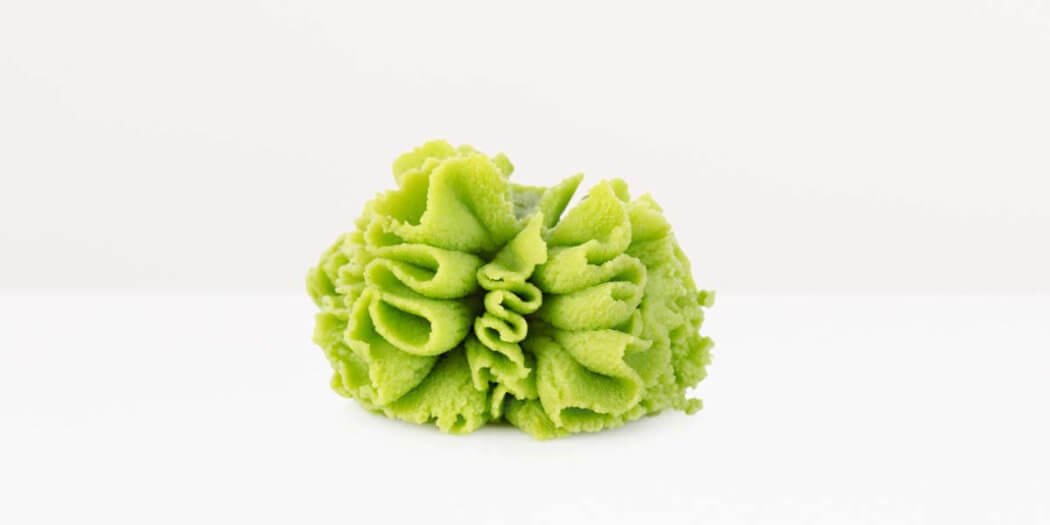Grocery Guides
Wasabi – All You Need to Know | Instacart Guide to Groceries

What is wasabi?
Wasabi is a root vegetable in the Brassicaceae family. It’s related to mustard and horseradish, but it’s still unique with its long and thick green rhizome.
However, that’s not how you’re probably used to seeing wasabi. The most popular form of wasabi is a spicy green paste often served alongside sushi. It’s notorious for sending a pleasant chill up your nose when you eat it and has become a staple condiment in many American homes.
Where did wasabi originate from?
Wasabi is native to Japan, where it flourishes in stream beds, mountains, and river valleys. It’s had a fixed place in Japanese cuisine—both as fresh produce and a paste—since the 8th century, and now it can be found all over the globe.
How is wasabi made?
Wasabi paste is made by very finely grating the wasabi rhizome with a sharkskin grater. The paste feels crumbly and wafts a pungent aroma that wears off in as little as 30 minutes. Since wasabi is such a delicate food, chefs at upscale Japanese restaurants grate their wasabi fresh when they’re sending out your dish.
But that’s not how most wasabi is prepared in the West. Because the wasabi plant is so challenging to grow (it only likes cool, shady areas and constantly needs moist soil), chefs outside Japan have had to get creative to serve this delicacy.
Western wasabi is made by blending horseradish, a hint of mustard, and some type of green food coloring. You can find it as a paste, usually sold inside a squeezable tube, or as a powder, to which you add water before serving.
The ingredient list is different from the original Japanese condiment, but that doesn’t mean Western wasabi isn’t good—it’s just different. It indeed serves a purpose, as it’s often spicier, much more affordable, and has a longer shelf life.
What are the benefits of eating wasabi?
One serving of wasabi, approximately 1tsp, contains just 15 calories. Like with most condiments, wasabi doesn’t have a lot of nutritional value. After all, you’re not eating wasabi as the star of a dish, right?
Adding just a dollop of wasabi paste to your dish can genuinely elevate it. It gives fine, delicate ingredients (such as fresh fish) a kick without masking their flavor. Moreover, you can also use wasabi to flavor butter, mayonnaise, and other spreads for a tangy, zesty hint.
How hot is wasabi?
This may come as a surprise to anyone whose eyes have watered after eating wasabi, but the Japanese paste isn’t hot. At least not in the same way that peppers are.
Its spicy kick comes from allyl isothiocyanate, a compound entirely different from capsaicin (found in hot peppers). That’s why you won’t find wasabi anywhere on the Scoville Scale.
Interestingly enough, our scent receptors for that flavor are densely packed around our nasal cavities. When you taste wasabi, you will feel a pleasant tingling sensation run up your nose—sort of like the urge to sneeze in the best way possible.
What should I look for when buying wasabi?
Many grocery stores carry wasabi nowadays, but if you want to grate yours from the root, you’ll need to head to a specialized Asian store. There, look for thick and firm rhizomes in the fresh produce aisle.
If it’s wasabi powder or paste that you’re after, you’ll likely find it in the condiments or international foods aisle. Look at the labels for a relatively short ingredient list, but don’t worry if you don’t recognize every word. Preservatives are added to wasabi to make it last for a long time.
Some wasabi products do contain a hint of soybean oil to give it a more consistent texture. If you have a soy allergy, you may want to avoid those specific wasabi pastes. Although soybean oil isn’t likely to trigger an allergic reaction, there are soy-free alternatives.
If you are looking to have your groceries delivered, you can easily shop for wasabi via Instacart. After adding a product to your cart, use the “Instructions” option to notify your Instacart shopper about any preferences or specific directions on how to choose the best products. Shop for wasabi.
Grab it now on Instacart:
How to store wasabi
You can store wasabi together with other pantry foods in a cool, dry place. Unopened wasabi paste will last for 2 to 3 years, but wasabi powder will last even longer.
Once you’ve opened the wasabi, you should keep it in the fridge. You will then have around 12 months or slightly longer to use it all up.
Fresh wasabi is different. It should be kept submerged in a glass of cold water in the fridge. Keep in mind that the water should be changed every day. If you follow this method, the wasabi won’t lose its crispness for 2 weeks.
How to tell if wasabi is bad
It’s easy to tell when wasabi has gone bad. The vibrant green color gives way to a brownish hue; it no longer smells fresh and loses its smooth texture. Fresh wasabi that has gone back looks soft, limp, and mushy.
What can I substitute for wasabi?
There are a few different wasabi substitutes you can reach for to add to your recipes:
All these condiments will give your food a similar flavor profile.
Where can I find wasabi near me?
Although wasabi is gaining popularity, some grocery stores still don’t stock it. Instead of driving around to several stores looking for it, home chefs can order wasabi online with Instacart. Thanks to same-day delivery, you can start thinking of what recipe to use wasabi for now and get it delivered within just a few hours, just in time for your next meal.
Most Recent in Grocery Guides

Grocery Guides
Guide to Sustainable Grocery Delivery
Who has time for the grocery store these days? Between work, family and everything else, it feels like a chore we could all do without. That's where sustainable grocery delivery comes in! You get the…
Feb 7, 2025
Grocery Guides
19 Best Milk Substitutes for Baking and Cooking
Milk’s rich texture and neutral flavor make it a staple in countless recipes, bringing creaminess and balance to sweet and savory dishes alike. But what happens if you run out of milk or need a…
Jan 30, 2025
Grocery Guides
15 Best Cheeses for Your Next Charcuterie Board
Let’s face it: The heyday of the store-bought party platter is long gone. Now, the duties of a good host often include curating an impressive charcuterie board. But where do you begin? Charcuterie boards typically…
Jan 21, 2025







 Squash – All You Need to Know | Instacart Guide to Fresh Produce
Squash – All You Need to Know | Instacart Guide to Fresh Produce  Ghost Pepper – All You Need to Know | Instacart Guide to Fresh Produce
Ghost Pepper – All You Need to Know | Instacart Guide to Fresh Produce  Sprouts – All You Need to Know | Instacart Guide to Fresh Produce
Sprouts – All You Need to Know | Instacart Guide to Fresh Produce 

